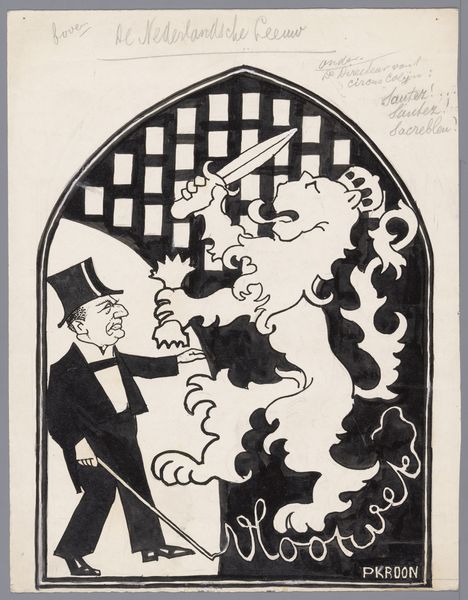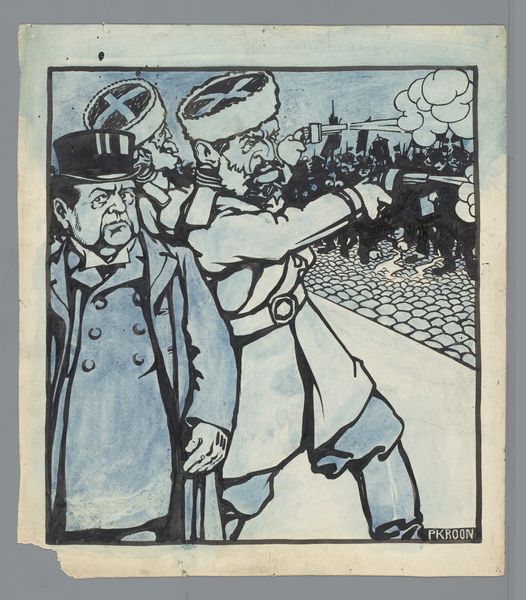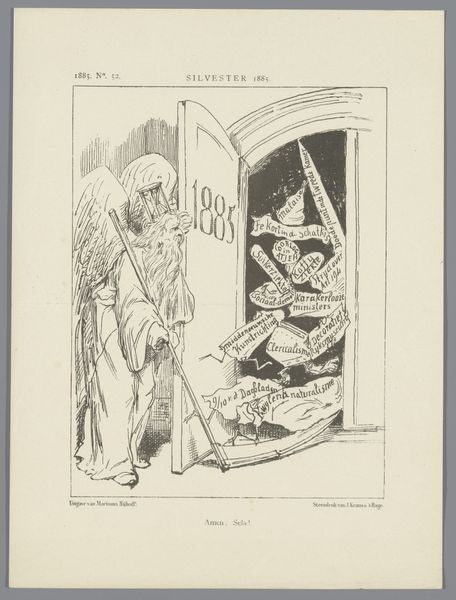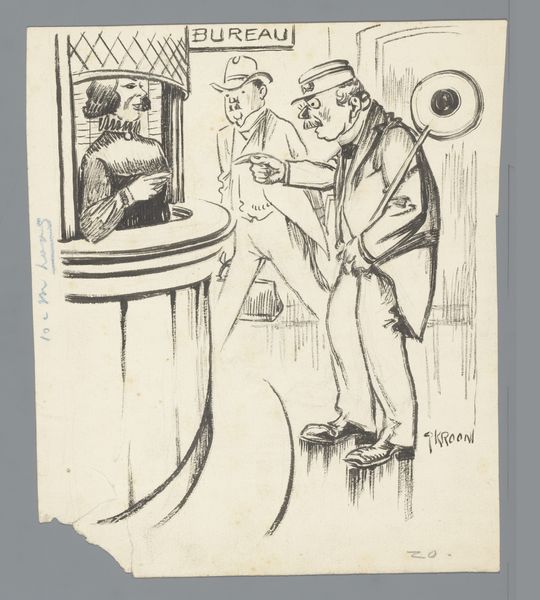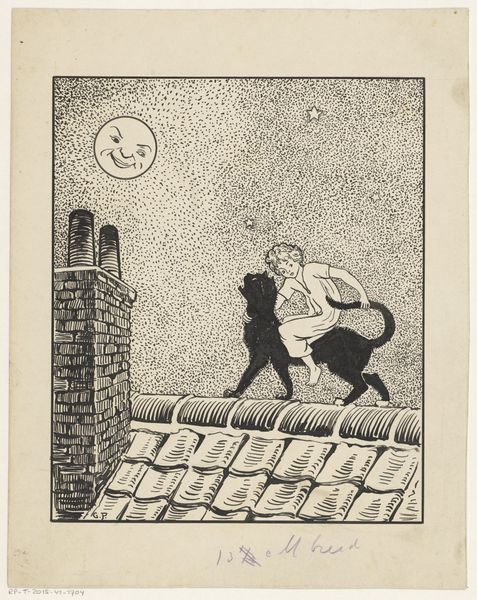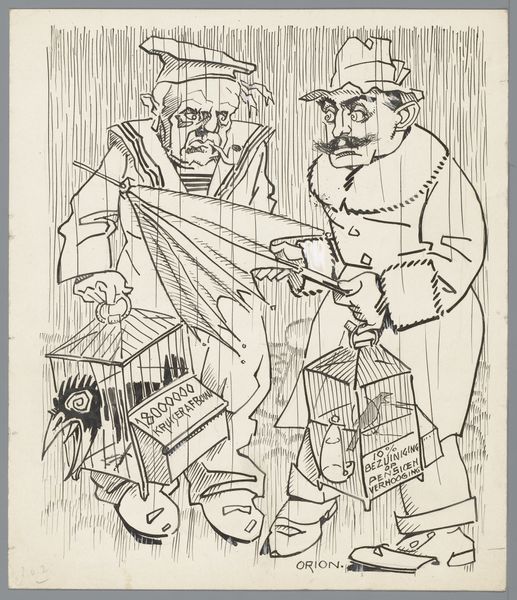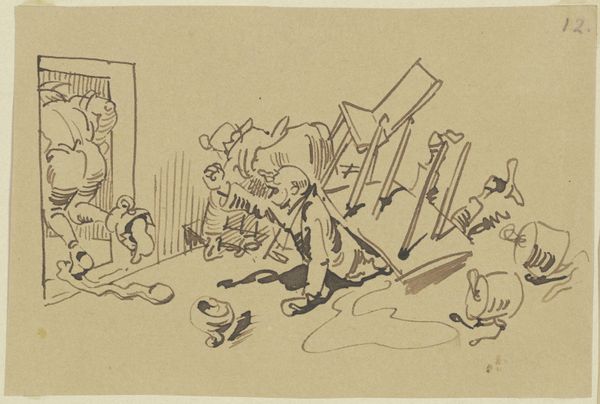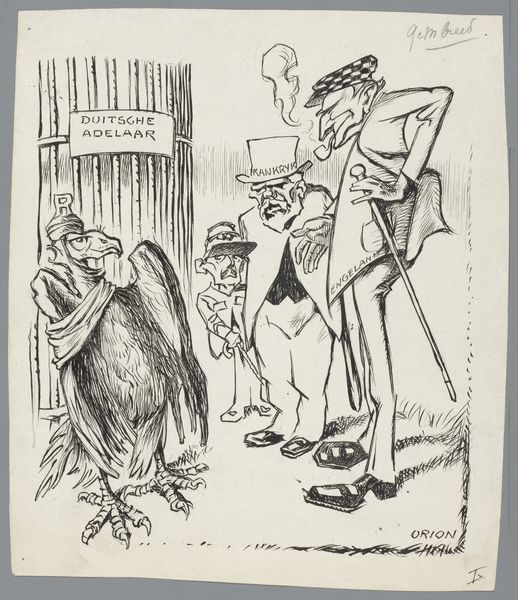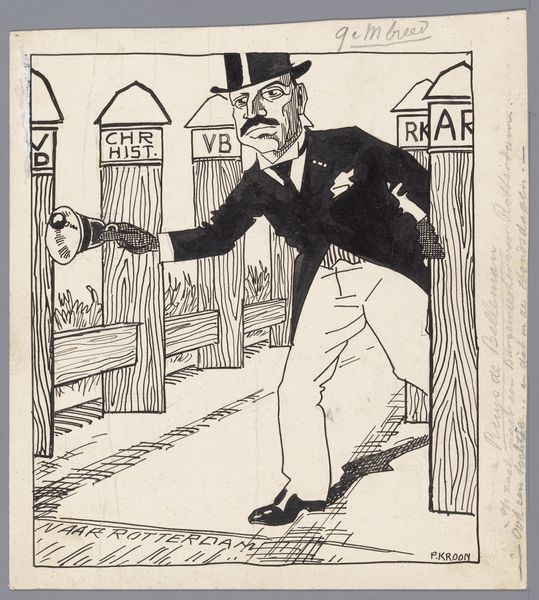
drawing, print, pen, poster
#
drawing
# print
#
caricature
#
figuration
#
line
#
pen
#
history-painting
#
poster
Dimensions: height 284 mm, width 254 mm
Copyright: Rijks Museum: Open Domain
Editor: This is "Revolutie naast Duitsland" or "Revolution next to Germany" by Patricq Kroon, made sometime between 1917 and 1918. It’s a drawing and print, and it definitely feels like a political caricature. The heavy lines and chaotic composition create a sense of unease, as though something momentous is about to occur. How do you read this piece? Curator: The piece clearly engages with the sociopolitical turmoil of the late World War I era, and probably was made by a Dutch artist. The imagery of German figures peering out a window as the 'Revolution' lightning strikes and shatters established systems--signified by tumbling blocks--is quite striking. We should unpack those shattering blocks though. What words are written on them? Editor: I see "Absolutisme" - Absolutism. And “Militarisme," clearly militarism. "Old ties,” Old ties I assume. Curator: Exactly. The cartoon is dismantling German Imperial ambitions and traditional political power structures as perceived within the Netherlands. How does that make you feel? Editor: A little overwhelmed! So, Kroon is showing Germany on the verge of collapse because of internal revolution and probably criticizes German authoritarian rule from a sympathetic yet ultimately neutral stance? Curator: Yes, although "neutrality" in times of political upheaval is always a constructed position. Who benefits from appearing neutral? This print uses the visual language of crisis to suggest significant political and societal changes underway, a critique of German politics using Dutch media and artistic style. The German eagle perched rather cluelessly really drives that point home. The publication context will tell you more. Editor: That's interesting. I initially saw it just as a reaction to war but I hadn’t thought about the Netherlands' place in all this, or how claiming "neutrality" functions as its own political act. Curator: Right! We're seeing art actively participate in the debates of its time. Understanding that dynamic – art as a political player– really opens up how we view pieces like this.
Comments
No comments
Be the first to comment and join the conversation on the ultimate creative platform.

